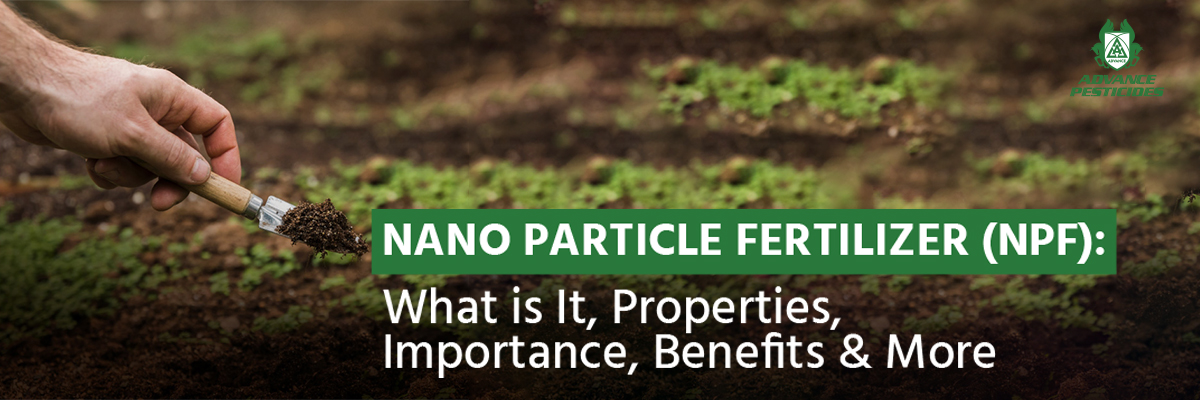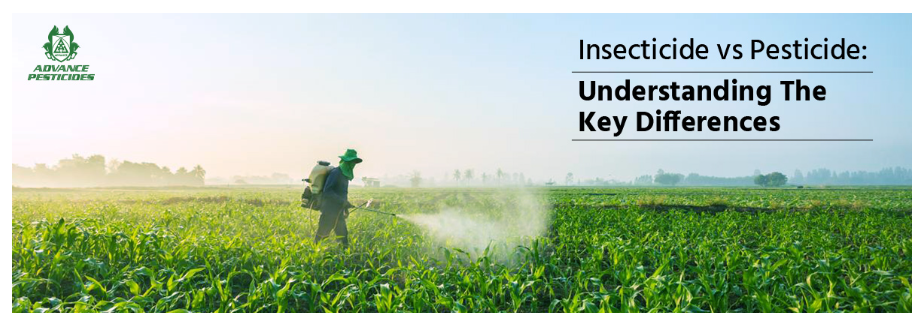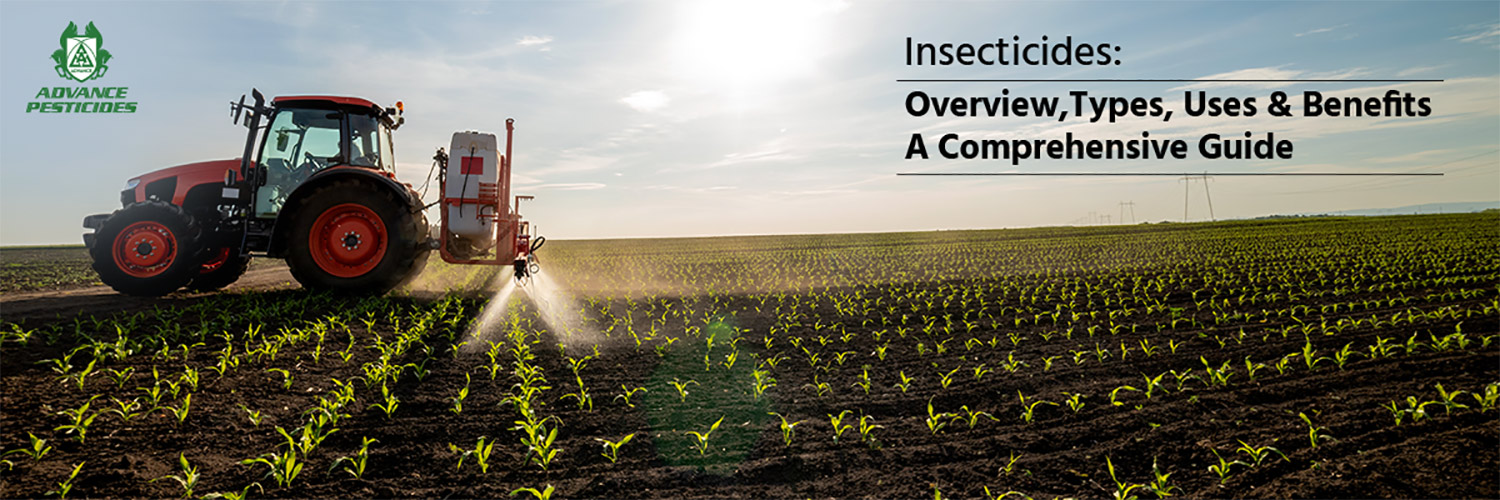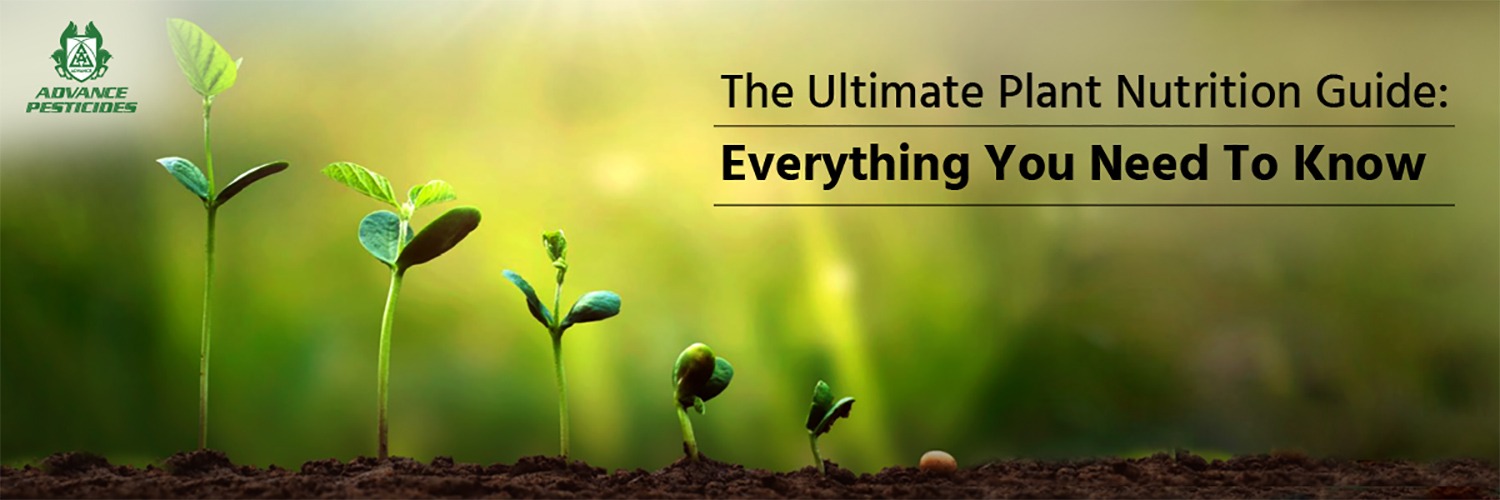Nano Particle Fertiliser (NPF): What is It, Properties, Importance, Benefits & More

Nanoparticle Fertilisers (NPF)
Fertilisers are essential for
boosting agricultural output, but their excessive use harms the chemical
properties of the soil irreparably and reduces the area that can be used for
crop production. Nanoparticle Fertilisers (NPF) are a type of fertiliser that
utilises nanotechnology to enhance nutrient delivery and uptake by plants.
The significance of NPF lies in their ability to address some of the limitations of traditional fertilisers. Conventional fertilisers are often applied to crops in larger quantities, leading to nutrient losses through leaching, runoff, and volatilisation. This not only wastes resources but also contributes to environmental pollution. NPF, on the other hand, can overcome these limitations by providing targeted nutrient delivery at the molecular level.
Properties of Nanoparticle Fertiliser (NPF)
Nanoparticles are emerging as the
material for transforming modern agricultural practices. Many
nanoparticle-based formulations, including herbicides, nano-sized pesticides,
and fungicides, have been extensively researched for plant health management
and soil improvement.
Some general properties of Nanoparticle Fertiliser (NPF) include:
● High surface area: The small size of NPF particles results in a larger surface area per unit mass than conventional fertilisers. This increased surface area enhances nutrient adsorption and interaction with plant roots.
● Enhanced nutrient solubility: NPF can improve the solubility of nutrients, making them more readily available for plant uptake. The nanoparticles can increase the dissolution rate of certain minerals, ensuring a more efficient nutrient release.
● Controlled release: NPF can be engineered to have controlled-release properties, allowing for a gradual and sustained release of nutrients over time. This controlled release helps to maintain nutrient availability and reduce nutrient losses.
● Improved nutrient use efficiency: NPF can enhance the efficiency of nutrient utilisation by plants. The nanoparticles can help overcome soil-related limitations, such as nutrient fixation or immobilisation, and promote better nutrient absorption by roots.
● Reduced environmental impact: Due to their targeted delivery and controlled-release capabilities, NPF can minimise nutrient losses to the environment, reducing the potential for water pollution and nutrient runoff.
● Compatibility
with existing systems: NPF can be incorporated into existing agricultural practices
without significant modifications. They can be applied through conventional
fertiliser application methods, such as spraying, irrigation, or soil
incorporation.
Importance
of Nano Particle Fertiliser (NPF)
Nanomaterials can restrict crop
diseases by directly acting on phytopathogens via various mechanisms, including
producing reactive oxygen species. These materials indirectly improve crop
production by improving crop nutrition and plant defence pathways.
Some key points highlighting the importance of NPF are:
● Enhanced nutrient efficiency: NPF offers
improved nutrient delivery and utilisation by plants, resulting in enhanced
nutrient use efficiency. This allows for optimal nutrient uptake, reducing the
need for excessive fertiliser application and reducing nutrient losses to the
environment.
● Increased crop productivity: By
providing targeted nutrient delivery and promoting better nutrient absorption,
NPF can enhance crop productivity. The controlled-release feature of NPF
ensures a sustained supply of nutrients, supporting plant growth throughout the
growing season and potentially increasing yields.
● Environmental sustainability: Traditional
fertilisers often contribute to environmental pollution through nutrient
runoff, leaching, and volatilisation. NPF, with its controlled-release
capabilities and reduced nutrient losses, helps mitigate these environmental
concerns. It minimises the release of excess nutrients into water bodies,
reducing water pollution and its impact on ecosystems.
● Resource efficiency: NPF optimises the use of
fertilisers by improving their efficiency. With NPF, the required amount of
fertiliser can be reduced while still achieving desired crop productivity. This
results in resource conservation, as less fertiliser is needed for the same
yield, leading to cost savings for farmers.
Benefits of Nano Particle Fertiliser (NPF)
Here are some key benefits of NPF:
● Reduced nutrient losses: NPF's controlled-release feature minimises nutrient losses through leaching, volatilisation, and runoff. This conserves valuable nutrients and reduces environmental pollution.
● Customised nutrient delivery: NPF can be tailored to release specific nutrients at specific rates, matching the nutrient requirements of different crops and growth stages. This customisation allows for precise nutrient delivery, optimising plant nutrition and reducing the risk of nutrient deficiencies.
● Improved soil health: NPF's targeted nutrient delivery and increased nutrient use efficiency contribute to improved soil health. By minimising nutrient losses and providing a sustained nutrient supply, NPF supports soil fertility and reduces the need for excessive fertilisation.
● Sustainable agriculture: NPF promotes sustainable agricultural
practices by reducing the environmental impact of fertilisers and optimising
resource use. It aligns with the principles of eco-friendly farming and ensures
the long-term viability of agricultural systems.
Types of
Nano Particle Fertiliser (NPF)
Nano Particle fertiliser can be
divided into various types based on the materials used in their formation.
Three common types of NPF are metal-based, carbon-based, and polymer-based
fertilisers.
Metal-based NPF
To carry particular nutrients or
trace elements like iron, zinc, copper, or silver, these nanoparticles can be
specially designed. Metal-based NPF is designed to improve the bioavailability
and uptake of these essential nutrients by plants. They can also exhibit
additional functionalities, such as antimicrobial properties or the ability to regulate
nutrient release.
Carbon-based NPF
These nanoparticles possess high
surface areas and unique physicochemical properties, which can enhance nutrient
adsorption and release. Carbon-based NPF can improve nutrient retention in the
soil, prevent nutrient leaching, and provide a sustained release of nutrients
to plants. They also have the potential to enhance soil structure and microbial
activity, contributing to overall soil health.
Polymer-based NPF
Polymer-based NPF utilises
nanoparticles made of biodegradable polymers or polymer composites. These
nanoparticles can encapsulate or adsorb nutrients, protecting them from
leaching or volatilisation. Polymer-based NPF offers controlled-release
properties, gradually releasing nutrients over an extended period. They can
also improve water retention in the soil, reduce nutrient runoff, and enhance
nutrient absorption by plants. Additionally, polymer-based NPF can be tailored
to respond to specific environmental cues or plant needs, enabling precise nutrient
delivery.
Application of Nano Particle Fertiliser (NPF)
NPF can be applied
through various methods, such as foliar spraying, seed coating, or soil
incorporation. Farmers can choose the most suitable application method based on
crop and soil conditions. Furthermore, NPF can be used with traditional
fertilisers to optimise nutrient availability and enhance overall plant
nutrition.
Challenges and Limitations of Nano Particle Fertiliser (NPF)
While Nano Particle
fertilisers can enhance agricultural productivity, certain challenges and
limitations must be addressed. One of the challenges is the production and cost
of NPF. Manufacturing nanoparticles can be complex and expensive compared to
traditional fertilisers.
The nanoparticles are so small that their potential accumulation in soil and water bodies can have long-term consequences for ecosystems. Therefore, conducting thorough research on the environmental fate and effects of NPF is crucial to ensure their safe and sustainable use.
Future of Nano Particle Fertiliser (NPF)
The future of Nano Particle fertilisers (NPF) holds immense potential for transforming agriculture and addressing global food security challenges. As research and development in nanotechnology continue progressing, several exciting prospects emerge.
Nanotechnology progressions will help create more efficient and cost-effective manufacturing processes for NPF. This will help to reduce production costs and make NPF more accessible to farmers. Moreover, using nanomaterials with enhanced nutrient release properties can further improve the effectiveness of NPF, ensuring better nutrient utilisation by plants.
Conclusion
Nanoparticle
fertilisers offer a promising solution to improve agricultural productivity and
address the challenges of feeding a growing global population. The application
of NPF allows for targeted and efficient delivery of nutrients, leading to
enhanced nutrient uptake, improved crop yields, and better quality produce. It
is essential to address the challenges and limitations of NPF, such as
production costs and potential environmental impact. Continued research and
development are crucial to ensure NPFs' safe and effective use and further
optimise their performance.
FAQs
about Nanoparticle Fertilisers (NPF)
Q1. How frequently should Nanoparticle Fertilisers be applied?
It is recommended to
follow the manufacturer's instructions and consult with agricultural experts or
agronomists for customised recommendations based on your specific farming
practices.
Q2. What is the cost of using Nanoparticle Fertilisers compared to traditional fertilisers?
Because of the
advanced technology involved, NPF may be more expensive than traditional
fertilisers. The cost will decrease over time as research and production
techniques improve.
Q3. How do Nanoparticle Fertilisers affect plant growth?
Nanoparticle
fertilisers have shown the potential to improve plant growth and productivity.
The small size of nanoparticles allows for better nutrient absorption and plant
utilisation.
Q4. How do I know if my soil needs Nanoparticle Fertilisers?
To determine if your
soil requires Nanoparticle fertilisers, it is recommended to conduct a
comprehensive soil analysis. Soil testing can assess nutrient levels, pH,
organic matter content, and other relevant parameters. Based on the results,
agronomic experts can recommend the most suitable fertilisation strategy,
including the potential use of NPF.
Invest In
The Future Of Your Farm At AdvancePesticides.com!
As you explore the potential of
Nano Particle fertilisers (NPF) for your farming practices, consider Advance
Pesticides as your partner in achieving optimal crop health and protection.
Advance Pesticides offers a wide range of innovative agricultural solutions,
including NPF, that can help you maximise your yields while minimising
environmental impact.
Visit AdvancePesticides.com today to learn more about their offerings, consult their knowledgeable team, and take a step towards a more productive and sustainable farming operation. Trust Advance Pesticides as your partner in protecting and nurturing your crops for a prosperous future.





